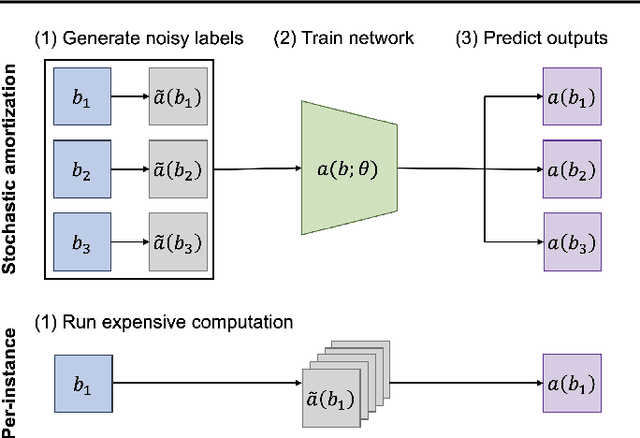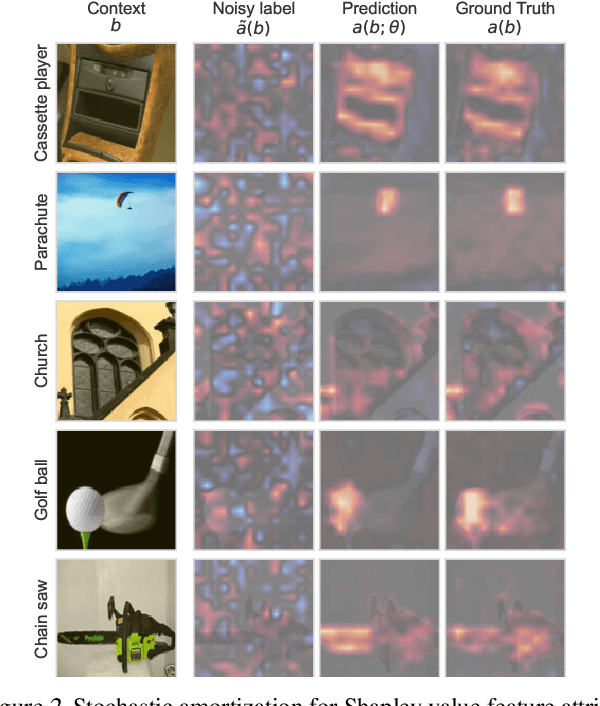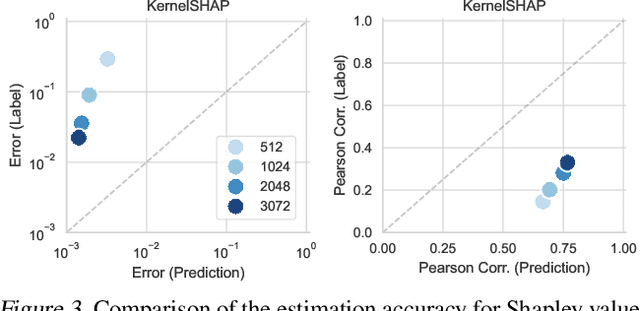Chanwoo Kim
OleSpeech-IV: A Large-Scale Multispeaker and Multilingual Conversational Speech Dataset with Diverse Topics
Sep 04, 2025Abstract:OleSpeech-IV dataset is a large-scale multispeaker and multilingual conversational speech dataset with diverse topics. The audio content comes from publicly-available English podcasts, talk shows, teleconferences, and other conversations. Speaker names, turns, and transcripts are human-sourced and refined by a proprietary pipeline, while additional information such as timestamps and confidence scores is derived from the pipeline. The IV denotes its position as Tier IV in the Olewave dataset series. In addition, we have open-sourced a subset, OleSpeech-IV-2025-EN-AR-100, for non-commercial research use.
Graph Spectral Filtering with Chebyshev Interpolation for Recommendation
May 01, 2025Abstract:Graph convolutional networks have recently gained prominence in collaborative filtering (CF) for recommendations. However, we identify potential bottlenecks in two foundational components. First, the embedding layer leads to a latent space with limited capacity, overlooking locally observed but potentially valuable preference patterns. Also, the widely-used neighborhood aggregation is limited in its ability to leverage diverse preference patterns in a fine-grained manner. Building on spectral graph theory, we reveal that these limitations stem from graph filtering with a cut-off in the frequency spectrum and a restricted linear form. To address these issues, we introduce ChebyCF, a CF framework based on graph spectral filtering. Instead of a learned embedding, it takes a user's raw interaction history to utilize the full spectrum of signals contained in it. Also, it adopts Chebyshev interpolation to effectively approximate a flexible non-linear graph filter, and further enhances it by using an additional ideal pass filter and degree-based normalization. Through extensive experiments, we verify that ChebyCF overcomes the aforementioned bottlenecks and achieves state-of-the-art performance across multiple benchmarks and reasonably fast inference. Our code is available at https://github.com/chanwoo0806/ChebyCF.
HyperFlow: Gradient-Free Emulation of Few-Shot Fine-Tuning
Apr 21, 2025Abstract:While test-time fine-tuning is beneficial in few-shot learning, the need for multiple backpropagation steps can be prohibitively expensive in real-time or low-resource scenarios. To address this limitation, we propose an approach that emulates gradient descent without computing gradients, enabling efficient test-time adaptation. Specifically, we formulate gradient descent as an Euler discretization of an ordinary differential equation (ODE) and train an auxiliary network to predict the task-conditional drift using only the few-shot support set. The adaptation then reduces to a simple numerical integration (e.g., via the Euler method), which requires only a few forward passes of the auxiliary network -- no gradients or forward passes of the target model are needed. In experiments on cross-domain few-shot classification using the Meta-Dataset and CDFSL benchmarks, our method significantly improves out-of-domain performance over the non-fine-tuned baseline while incurring only 6\% of the memory cost and 0.02\% of the computation time of standard fine-tuning, thus establishing a practical middle ground between direct transfer and fully fine-tuned approaches.
AV-Surf: Surface-Enhanced Geometry-Aware Novel-View Acoustic Synthesis
Mar 17, 2025Abstract:Accurately modeling sound propagation with complex real-world environments is essential for Novel View Acoustic Synthesis (NVAS). While previous studies have leveraged visual perception to estimate spatial acoustics, the combined use of surface normal and structural details from 3D representations in acoustic modeling has been underexplored. Given their direct impact on sound wave reflections and propagation, surface normals should be jointly modeled with structural details to achieve accurate spatial acoustics. In this paper, we propose a surface-enhanced geometry-aware approach for NVAS to improve spatial acoustic modeling. To achieve this, we exploit geometric priors, such as image, depth map, surface normals, and point clouds obtained using a 3D Gaussian Splatting (3DGS) based framework. We introduce a dual cross-attention-based transformer integrating geometrical constraints into frequency query to understand the surroundings of the emitter. Additionally, we design a ConvNeXt-based spectral features processing network called Spectral Refinement Network (SRN) to synthesize realistic binaural audio. Experimental results on the RWAVS and SoundSpace datasets highlight the necessity of our approach, as it surpasses existing methods in novel view acoustic synthesis.
Learning-based Dynamic Robot-to-Human Handover
Feb 18, 2025Abstract:This paper presents a novel learning-based approach to dynamic robot-to-human handover, addressing the challenges of delivering objects to a moving receiver. We hypothesize that dynamic handover, where the robot adjusts to the receiver's movements, results in more efficient and comfortable interaction compared to static handover, where the receiver is assumed to be stationary. To validate this, we developed a nonparametric method for generating continuous handover motion, conditioned on the receiver's movements, and trained the model using a dataset of 1,000 human-to-human handover demonstrations. We integrated preference learning for improved handover effectiveness and applied impedance control to ensure user safety and adaptiveness. The approach was evaluated in both simulation and real-world settings, with user studies demonstrating that dynamic handover significantly reduces handover time and improves user comfort compared to static methods. Videos and demonstrations of our approach are available at https://zerotohero7886.github.io/dyn-r2h-handover .
Leveraging 2D Masked Reconstruction for Domain Adaptation of 3D Pose Estimation
Jan 14, 2025Abstract:RGB-based 3D pose estimation methods have been successful with the development of deep learning and the emergence of high-quality 3D pose datasets. However, most existing methods do not operate well for testing images whose distribution is far from that of training data. However, most existing methods do not operate well for testing images whose distribution is far from that of training data. This problem might be alleviated by involving diverse data during training, however it is non-trivial to collect such diverse data with corresponding labels (i.e. 3D pose). In this paper, we introduced an unsupervised domain adaptation framework for 3D pose estimation that utilizes the unlabeled data in addition to labeled data via masked image modeling (MIM) framework. Foreground-centric reconstruction and attention regularization are further proposed to increase the effectiveness of unlabeled data usage. Experiments are conducted on the various datasets in human and hand pose estimation tasks, especially using the cross-domain scenario. We demonstrated the effectiveness of ours by achieving the state-of-the-art accuracy on all datasets.
Physics Informed Distillation for Diffusion Models
Nov 13, 2024



Abstract:Diffusion models have recently emerged as a potent tool in generative modeling. However, their inherent iterative nature often results in sluggish image generation due to the requirement for multiple model evaluations. Recent progress has unveiled the intrinsic link between diffusion models and Probability Flow Ordinary Differential Equations (ODEs), thus enabling us to conceptualize diffusion models as ODE systems. Simultaneously, Physics Informed Neural Networks (PINNs) have substantiated their effectiveness in solving intricate differential equations through implicit modeling of their solutions. Building upon these foundational insights, we introduce Physics Informed Distillation (PID), which employs a student model to represent the solution of the ODE system corresponding to the teacher diffusion model, akin to the principles employed in PINNs. Through experiments on CIFAR 10 and ImageNet 64x64, we observe that PID achieves performance comparable to recent distillation methods. Notably, it demonstrates predictable trends concerning method-specific hyperparameters and eliminates the need for synthetic dataset generation during the distillation process. Both of which contribute to its easy-to-use nature as a distillation approach for Diffusion Models. Our code and pre-trained checkpoint are publicly available at: https://github.com/pantheon5100/pid_diffusion.git.
Wave-U-Mamba: An End-To-End Framework For High-Quality And Efficient Speech Super Resolution
Sep 17, 2024



Abstract:Speech Super-Resolution (SSR) is a task of enhancing low-resolution speech signals by restoring missing high-frequency components. Conventional approaches typically reconstruct log-mel features, followed by a vocoder that generates high-resolution speech in the waveform domain. However, as log-mel features lack phase information, this can result in performance degradation during the reconstruction phase. Motivated by recent advances with Selective State Spaces Models (SSMs), we propose a method, referred to as Wave-U-Mamba that directly performs SSR in time domain. In our comparative study, including models such as WSRGlow, NU-Wave 2, and AudioSR, Wave-U-Mamba demonstrates superior performance, achieving the lowest Log-Spectral Distance (LSD) across various low-resolution sampling rates, ranging from 8 kHz to 24 kHz. Additionally, subjective human evaluations, scored using Mean Opinion Score (MOS) reveal that our method produces SSR with natural and human-like quality. Furthermore, Wave-U-Mamba achieves these results while generating high-resolution speech over nine times faster than baseline models on a single A100 GPU, with parameter sizes less than 2% of those in the baseline models.
AdaMER-CTC: Connectionist Temporal Classification with Adaptive Maximum Entropy Regularization for Automatic Speech Recognition
Mar 18, 2024



Abstract:In Automatic Speech Recognition (ASR) systems, a recurring obstacle is the generation of narrowly focused output distributions. This phenomenon emerges as a side effect of Connectionist Temporal Classification (CTC), a robust sequence learning tool that utilizes dynamic programming for sequence mapping. While earlier efforts have tried to combine the CTC loss with an entropy maximization regularization term to mitigate this issue, they employed a constant weighting term on the regularization during the training, which we find may not be optimal. In this work, we introduce Adaptive Maximum Entropy Regularization (AdaMER), a technique that can modulate the impact of entropy regularization throughout the training process. This approach not only refines ASR model training but ensures that as training proceeds, predictions display the desired model confidence.
Stochastic Amortization: A Unified Approach to Accelerate Feature and Data Attribution
Jan 29, 2024



Abstract:Many tasks in explainable machine learning, such as data valuation and feature attribution, perform expensive computation for each data point and can be intractable for large datasets. These methods require efficient approximations, and learning a network that directly predicts the desired output, which is commonly known as amortization, is a promising solution. However, training such models with exact labels is often intractable; we therefore explore training with noisy labels and find that this is inexpensive and surprisingly effective. Through theoretical analysis of the label noise and experiments with various models and datasets, we show that this approach significantly accelerates several feature attribution and data valuation methods, often yielding an order of magnitude speedup over existing approaches.
 Add to Chrome
Add to Chrome Add to Firefox
Add to Firefox Add to Edge
Add to Edge